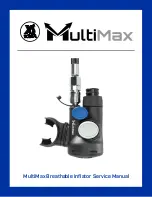
1-11
IM WT310E-01EN
Features
1
2
3
4
5
6
7
8
App
Index
Input Filters (For procedures, see section 2.9)
There are two types of input filters: the line filter and the frequency filter.
Line Filter
Because the line filter is inserted into the voltage and current measurement input circuits, it directly
affects voltage, current, and power measurements (see the block diagram in appendix 7). When the
line filter is turned on, measured values do not contain high frequency components. Thus, the voltage,
current, and power of inverter waveforms, distorted waveforms, etc., can be measured with their high
frequency components eliminated.
Frequency Filter
The frequency filter is inserted into the frequency measurement input circuit and affects frequency
measurements. It also affects the detection of the measurement period for voltage, current, and power
measurements (see appendix 4). In this case, the filter also acts as a filter for detecting the zero-
crossing of the synchronization source signal more accurately. The frequency filter is not inserted
into the voltage and current measurement input circuits. Therefore, the measured values include high
frequency components even when the frequency filter is turned on.
Averaging (For procedures, see section 2.11)
You can take exponential or moving averages of the numeric data. The averaging function is useful
when because of large changes in the power or load or a low input signal frequency, the numeric
display fluctuates and is difficult to read.
Turning Averaging On and Off
Measurement Functions Used in Normal Measurement
You can select whether to average values. When you enable averaging (ON), the AVG indicator
illuminates.
Measurement Functions Used in Harmonic Measurement (Option)
• If averaging is turned on, and the averaging type is EP (exponential averaging), averaging is
performed on harmonic measurement functions.
• Even if averaging is turned on, if the averaging type is Lin (moving average), averaging is not
performed on harmonic measurement functions.
Averaging Types
You can use exponential or moving averages.
Exponential Averaging
With the specified attenuation constant, the numeric data is exponentially averaged according to the
equation below.
D
n
=
(M
n
−
D
n
−
1
)
K
D
n
−
1
+
Dn: Displayed value that has been exponentially averaged n times. (The first displayed value, D
1
, is
equal to M
1
.)
Dn–1: Displayed value that has been exponentially averaged n–1 times.
Mn: Numeric data at the n
th
time.
K: Attenuation constant (select from 8, 16, 32, and 64)
1.2 Measurement Conditions
















































